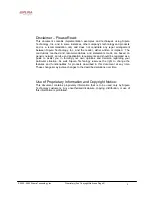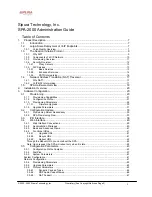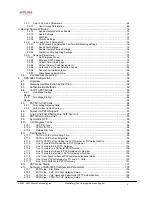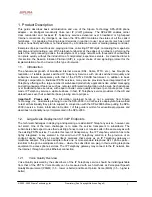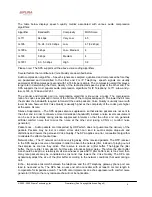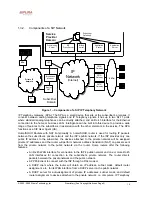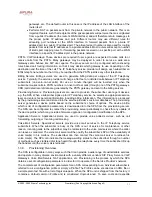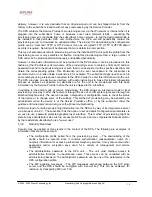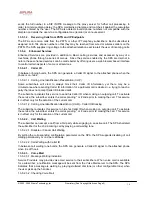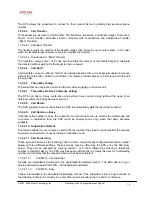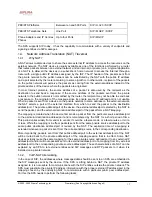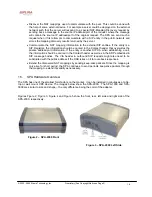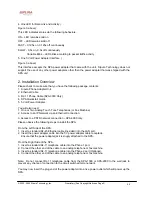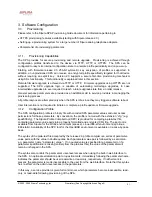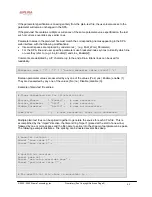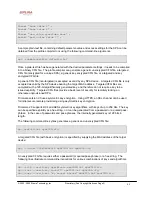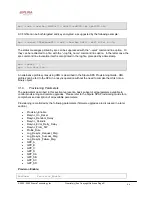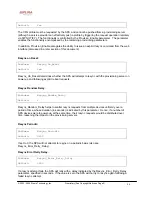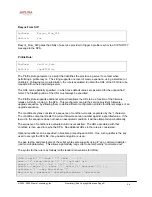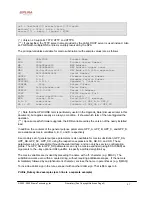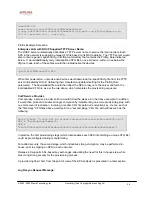
© 2003 - 2005 Sipura Technology, Inc
Proprietary (See Copyright Notice on Page 2)
13
•
RTP packets – The RTP payload exchanged between SIP user agents can be encrypted
with a secret key to protect against eavesdropper. The secret key can be negotiated with
proper SIP signaling messages. Hence the signaling path must be secured also.
1.3.4.1. Proxy
Servers
Proxy servers handle two functions:
1. Accept registrations from the SIP user agents,
2. Proxy requests and responses between user agents.
Registration is the process by which a user agent tells the proxy who it is and at what IP address and
port that it can be reached via SIP. Registration usually expires within a finite period (e.g., 60s or
3600s) and the UA shall renew their registration periodically before the last registration expires. When
a user agent initiates a call, it sends a SIP INVITE request to the proxy server and indicates the target
recipient of the call. The proxy server then consults a database to determine where to forward the
request to the destination user agent. The proxy server can request authentication credentials from
the user agent before granting the service. The credentials are computed by the user agent based on
a pre-provisioned password and a challenge “nonce” dynamically generated by the proxy server per
request. This mechanism prevents unauthorized user agents from getting IP Telephony services
through the proxy server. SIP proxy servers are operated by the IP Telephony service provider and
resides at the service provider’s domain. They may be implemented in many different ways. They can
be stateless, stateful, or B2BUA. Stateless proxies do not maintain states of each call; they simply
proxy the requests and responses between the user agents. Hence they are the simplest, most
scalable, but provide the least types of services. Advanced IP Telephony services are possible with
these proxies only with intelligent user agent devices that are capable of delivering these services
without proxy intervention. Stateful proxies maintain the call state of each call and can provide more
intelligent services at the expense of more processing load per call. B2BUA proxies process every
request and response from the user agents and are capable of providing very advance services even
with relatively simple user agent devices. Obviously B2BUA proxies have the highest processing load
per call.
1.3.5. SIP
Services
Today’s PSTN offers a large number of enhanced services in addition to basic phone services. Most
of the services offered by the PSTN are accessed by the subscribers through their telephone sets.
The subscribers provide their input by talking into the handset, pressing the keypad, the switch hook
or flash button, while the PSTN presents instructions/information/confirmation to the subscribers
through a variety of audio tones, beeps and/or announcements. The SPA supports a comparable
range of services via a similar user interface in order to make the IP Telephony service transparent to
subscribers.
The SPA is fully programmable and can be custom provisioned to emulate just about any traditional
telephony service available today. This ability to transparently deliver legacy services over an IP
network coupled with the availability of Internet connected devices (PCs. PDA, etc.) and browsers
opens up a new world of potential offerings that a provider can use to differentiate their service and
grow their business.
The following is a list of commonly supported phone services:
1.3.5.1. Basic
Services
1.3.5.1.1.
Making Calls to PSTN and IP Endpoints
This is the most basic service. When the user picks up the handset, the SPA provides dial tone and is
ready to collect dialing information via DTMF digits from a touch tone telephone. While it is possible to
support overlapped dialing within the context of SIP, the SPA collects a complete phone number and


